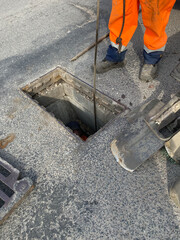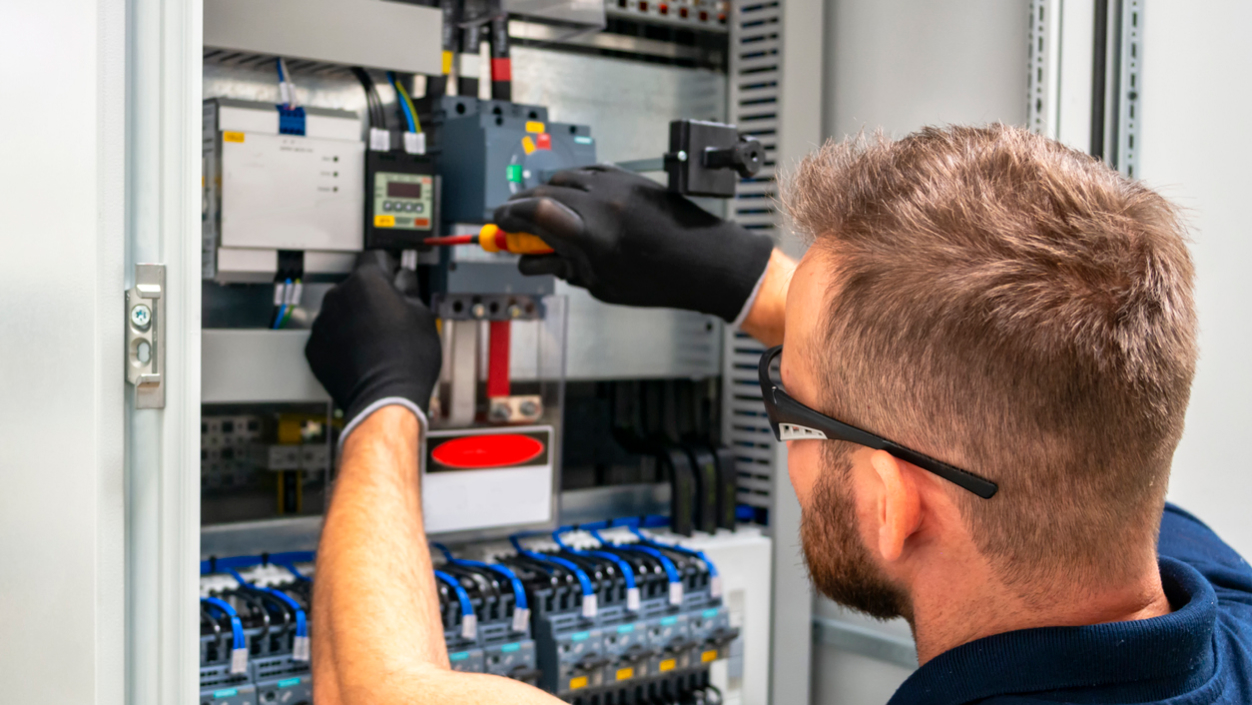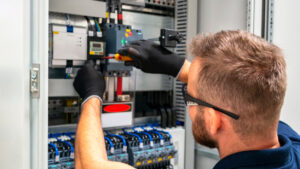If you’re frustrated with recurring drain clogs, it may be time to consider hydrojetting. Plumbing Express, Inc. helps you avoid costly sewer backups and other expensive repairs.
Hydro jetting uses a high-pressure water hose with a nozzle that comes in different sizes depending on the size of your pipe. Unlike plumbing snakes, this hose can penetrate the walls of your pipes to break them apart and wash away stubborn clogs.
Water is a universal cleaning agent, and at high pressure, it can break apart even the most stubborn dirt buildups. The water blasts from hydrojet machines are powerful enough to remove grime, loose paint, mud, mold, dust, and other tough debris from tanks, buildings, vehicles, streets, bridges, and pipes. The water used in hydro jetting can be targeted and aimed at specific areas of a pipe or drain with the use of specialized nozzles. These nozzles may be designed for getting around corners or breaking up specific types of blockages.
The force of the water blast can also dislodge clogs and debris without damaging the pipes themselves. The water is able to reach the deepest parts of a pipe where other tools, such as plumbing snakes and augers, are not able to go. This means that hydrojetting can be the answer for recurrent and persistent clogs, especially in older pipes or in larger commercial sewer lines.
Hydro jetting also eliminates the need for chemical drain cleaners, which are bad for both the pipes and the environment. Chemicals can damage pipes, and they can enter the groundwater supply, which could cause problems for you and your neighbors. The water in a hydrojetting machine is safe for both the pipes and the environment.
With the ability to clean right down to the pipe wall, hydro jetting is the perfect solution for removing stubborn blockages that a traditional snake can’t handle. It can also be used to clear out a line before pipe lining, so the epoxy lining will bond properly to the existing pipe.
Hydrojetting is particularly useful in commercial applications, such as restaurants. Food preparation establishments tend to produce a lot more grease and other sticky substances that can build up in pipes, leading to blockages. Hydro jetting can flush out the lines and remove any lingering residues, making it a good preventative maintenance tool to have done every year or two. This can help reduce the risk of clogs and slow draining, which can lead to expensive downtime for your business.
No Chemicals
Many drain clogs are caused by a buildup of soap scum, cooking grease, mineral deposits, dirt, and other debris. When these clogs aren’t removed, they can cause water or waste to back up into your home. Store-bought chemical cleaners may dissolve the clog, but they can also harm your pipes. They can eat through or damage the pipes and the insides of your drains, making them more susceptible to future blockages. Hydro jetting, on the other hand, uses only pressurized streams of water to clean your pipes and eliminate clogs.
The absence of chemicals means that hydrojetting is safe for your piping and the environment. It’s an excellent choice for removing serious clogs that don’t respond to other methods, such as plunging or a plumbing snake. It can also break up and wash away clog-causing tree roots, which can lead to sewer line backups.
Before proceeding with the hydrojetting process, your plumber will conduct a video inspection of your pipes and sewer line. This will help them determine the severity of the clog and pinpoint its location. The video inspection can also identify any broken or damaged pipes that need repair.
When the plumber is ready to begin cleaning your pipes, they’ll turn on the water and direct the hydrojets towards the clogged areas of the pipe. The powerful stream of water will scour the interior surfaces of the pipe and remove any debris that is blocking the flow of waste or water. It will also clear out any sludge or mud that has built up inside the pipe over time.
The absence of chemicals means that hydro jetting will not damage your piping and can be used on older and smaller-sized piping. You’ll also be able to avoid the costly repair bills that can come with using liquid drain cleaners or other chemical-based solutions. Hydrojetting can also be used as a preventative measure to stop minor clogs from turning into big ones. By having it done regularly, you’ll keep your piping in great condition and avoid repeated clogs and sewer backups.
No Damage
The hydrojet blasts a high-pressure stream of water through your drain and sewer lines. The force of the water is strong enough to break up rock, silt, and tree roots without damaging your pipes. It is also gentle enough to clean the sides of your pipes, leaving them as good as new. This makes it an excellent method for cleaning out old pipes before relining them.
While chemical drain cleaners may dissolve clogs, they can damage your pipes. They are often corrosive and may eat away at the metal in your pipework, which can cause cracks and leaks. Hydrojetting is much healthier for your plumbing system because it does not use corrosive chemicals.
Another benefit of hydrojetting is that it can completely clear even the most stubborn clogs. A plumbing snake is often able to only poke a hole through the blockage, which can then trap new debris and lead to more clogs. The hydro jetting machine can actually destroy the clog and blast the walls of the pipe clean, which can leave your pipes looking brand new.
Before using a hydrojetting machine, a plumber will usually insert a video camera into the pipes and sewer line to check out the severity of the clog. This inspection will also help the plumber determine the best way to remove the clog.
When a plumbing technician is ready to perform hydrojetting, they will attach the hose to the nozzle and turn on the machine. The nozzle can be adjusted to different angles to target the exact location of the clog and to avoid damage to other parts of the plumbing system.
The powerful water jets will quickly blast through your clog and break it up. This can include hair, sand, grease, minerals, and more. The loosened clog will then flow down the pipe and into the sewer system. The clean-looking walls of the pipe will help prevent future clogs and keep your drains working properly.
It is recommended that you schedule regular hydrojetting services for your home or business. This will keep your drains and sewer lines working efficiently and protect you against foul odors and bacteria that can affect the health of your family or employees. It is especially important for restaurants and food preparation establishments to schedule regular hydrojetting services. These businesses produce much more grease and solid food waste than residential homes, which can build up and eventually lead to serious drain clogs.
Safety
As with any job that involves high-pressure water, there are certain measures that need to be taken into consideration. Workers who are exposed to the water spray or reflected from the pipe walls should wear a rain suit, a face shield, safety glasses, a hard hat with a face guard, rubber gloves, and hearing protection. They should also be seated in a well-ventilated area. Workers who are not seated should be in a position that allows them to maintain control of the jet gun at all times. They should also ensure that they are not in close proximity to other workers who could be affected by the water jet.
Whether you’re experiencing a slow drain or a full-fledged clog, hydrojetting is the most effective way to unclog your pipes. Its powerful force breaks through and scours away the buildup of hair, soap, grease, tree roots, minerals, and more from your sewer line. Store-bought snakes and drain chemicals don’t do as good a job of breaking up this debris, and they often push it deeper into the pipe.
Hydro jetting can also help prevent recurrent clogs, which means you’ll need to call a plumber less frequently. You can usually schedule a hydrojetting service for about $250, but the price can vary depending on what type of blockage you have. Severe clogs that are farther from the drain cleanout might take longer to clear and will cost more.
In addition to its effectiveness, hydrojetting is a safe and eco-friendly method. It uses only water and doesn’t introduce any chemicals into the soil or groundwater. This is particularly beneficial for commercial applications, where food prep establishments produce more greasy and solid waste than homes would. Hydrojetting is the perfect solution for these situations, as it can remove all traces of sludge and debris without damaging the pipes. In addition, it can restore the diameter of your drains to their original size. This will make them more effective and efficient, especially when you have a large volume of wastewater coming through the drain. For these reasons, Hoffmann Brothers recommends hydro jetting as part of a regular maintenance plan for your commercial plumbing system.

